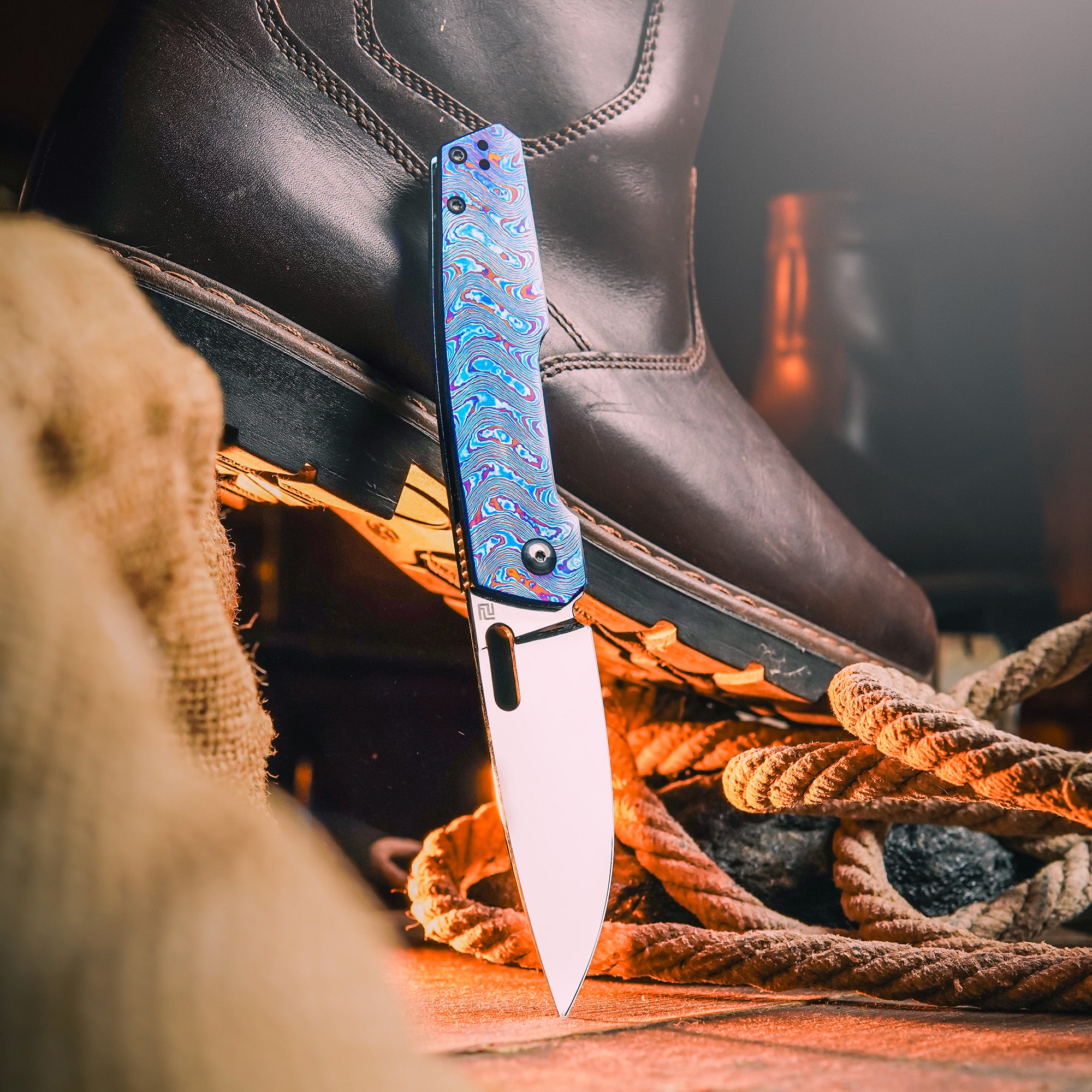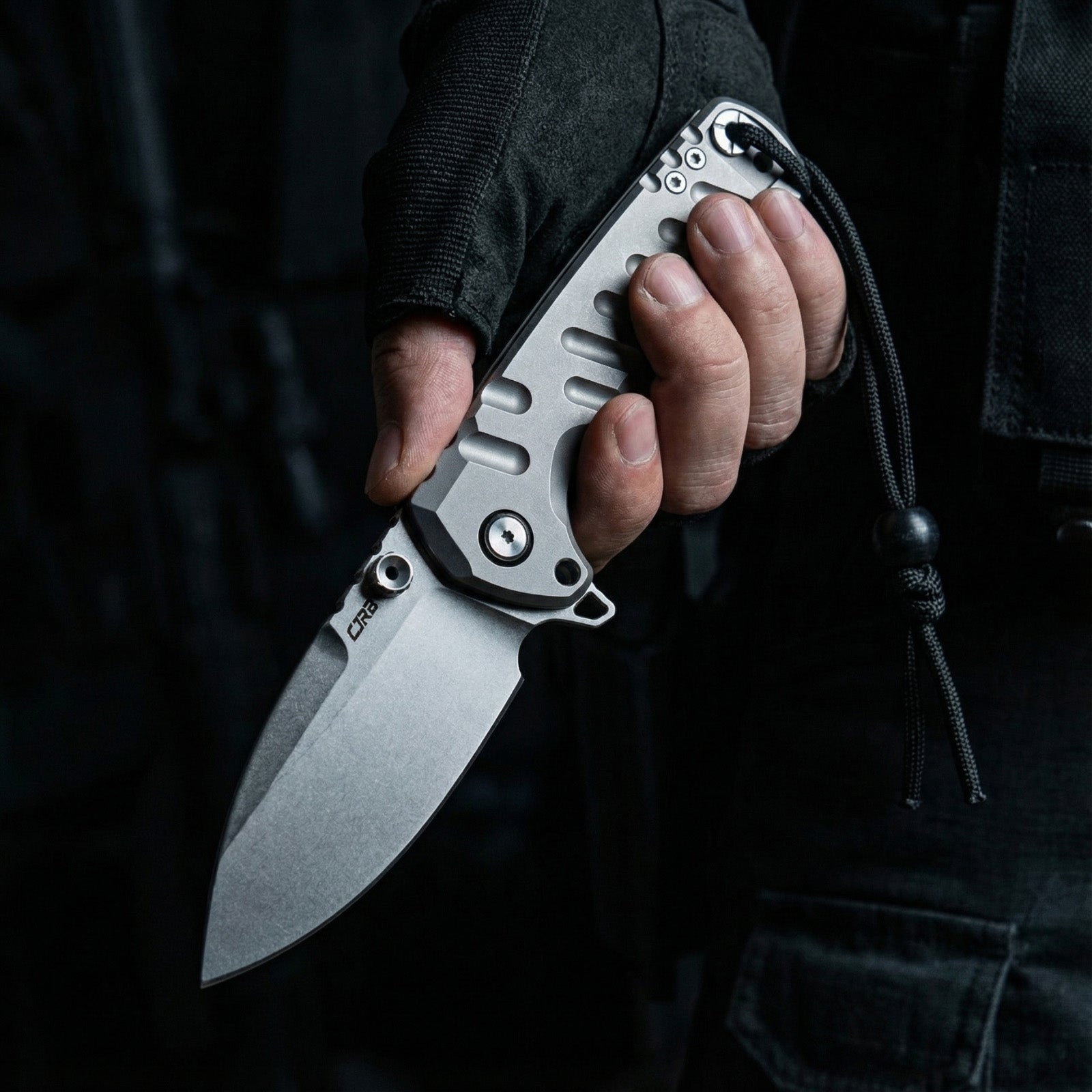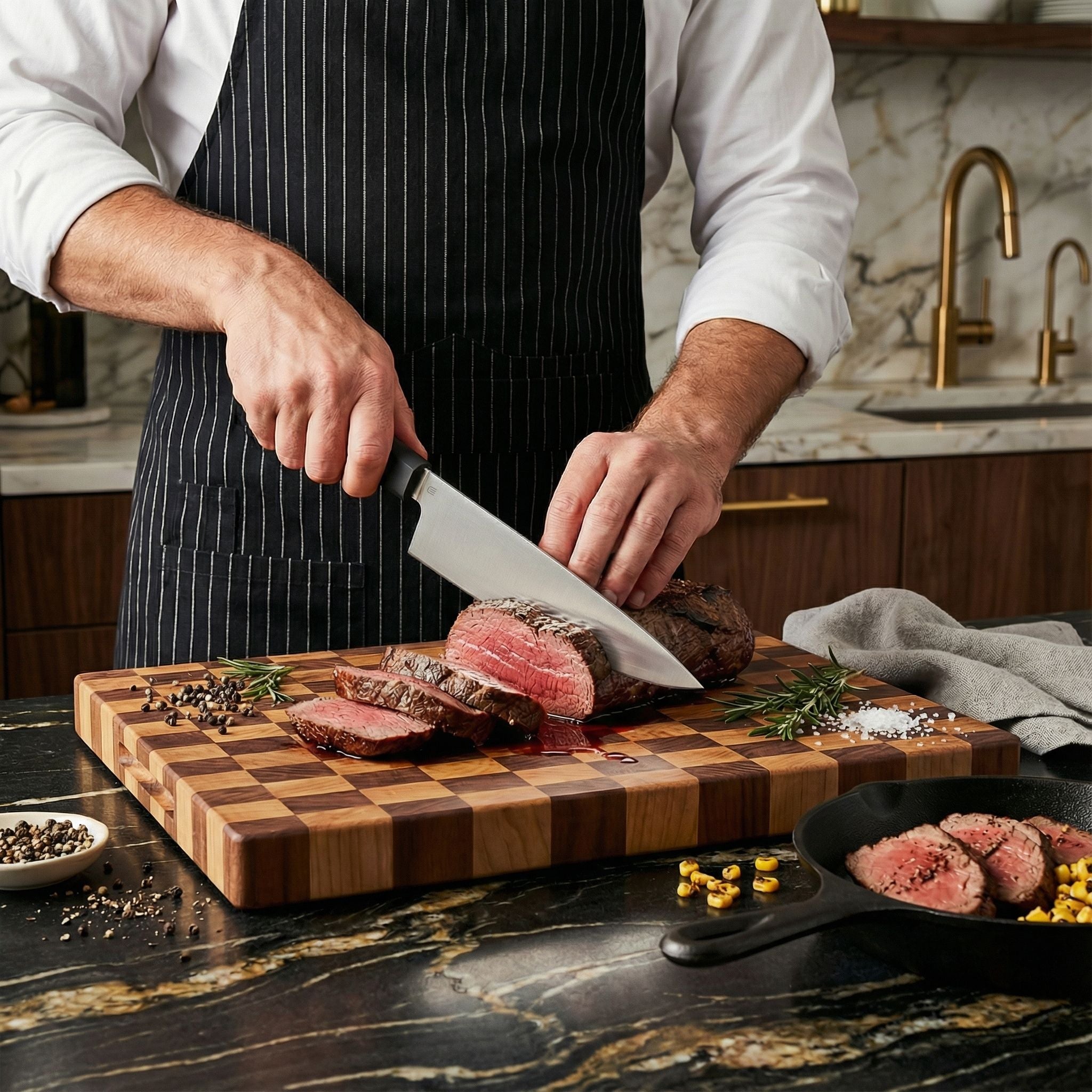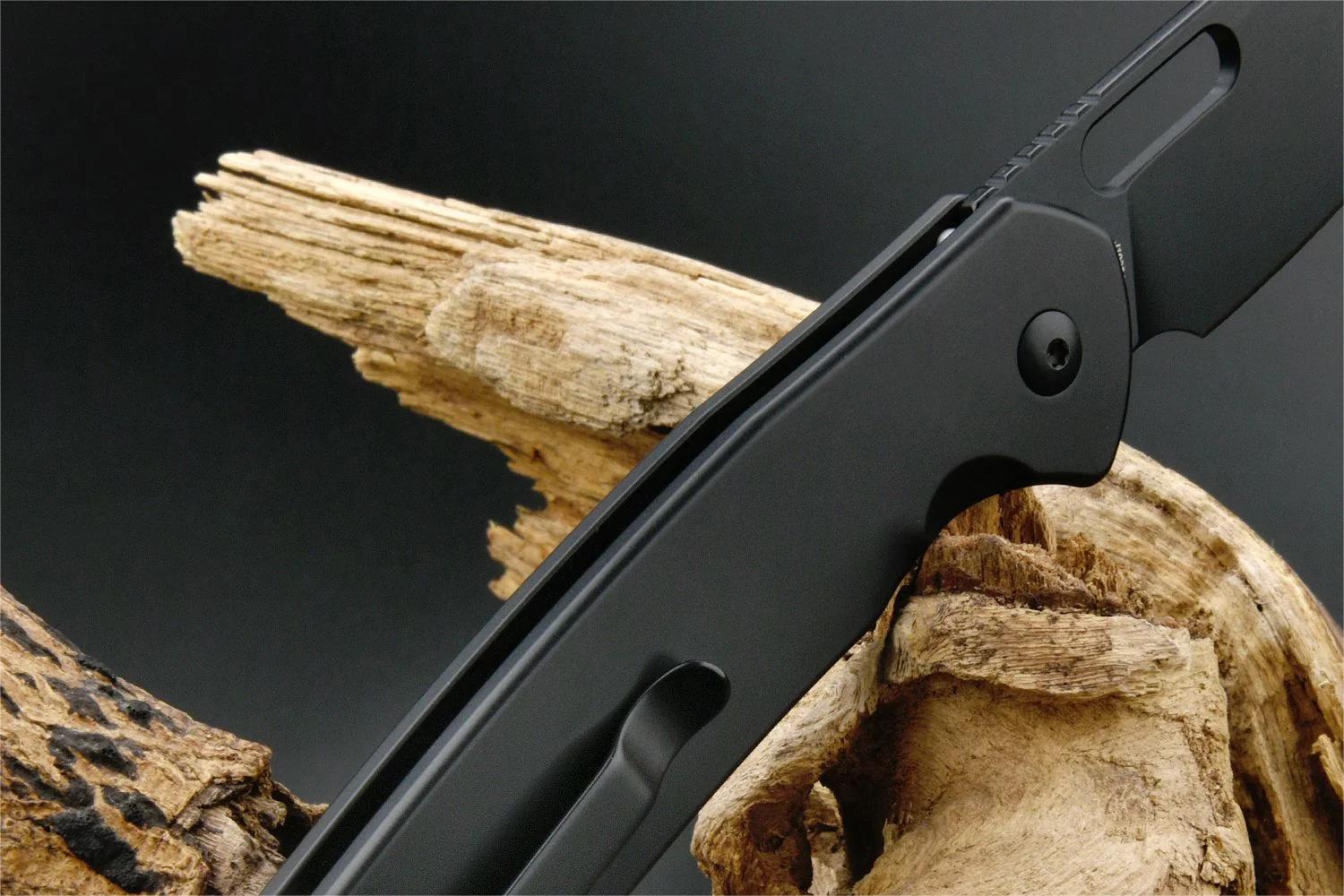
What Is a Pocket Clip?
A pocket clip is a slim, usually metal, attachment found on many folding knives and tools. Its primary function is to secure the item inside a pocket, ensuring easy access and reducing the likelihood of loss. Typically, the clip is fastened to the handle of the knife or tool with small screws, allowing it to cling to the fabric of the pocket.
What Does a Pocket Clip Do?
- Enhances Portability and Accessibility: The pocket clip's primary role is to boost the portability of small tools or knives. It facilitates easy attachment to various points like pockets, belts, or the edges of bags. This not only makes the tool more accessible but also ensures it's always within reach.
- Secure Attachment: It provides a secure means of carrying the tool. By fastening the tool to a pocket or belt, the clip keeps it stable and prevents it from moving around. This secure attachment is crucial, especially in active or mobile situations.
- Quick and Easy Access: A pocket clip allows for swift access to the tool. Positioned at the edge of a pocket or belt, it ensures that the user can quickly draw the tool without any delay, which is particularly valuable in urgent situations.
- Prevents Loss or Slippage: The https://everydaycarry.com/edc-knife-locks-guide significantly minimizes the risk of the tool slipping into an unreachable part of the pocket or bag. It keeps the tool anchored in a fixed position, safeguarding it from getting lost among other items or sinking to the bottom of a pocket.
- Protects the Tool: By maintaining the tool in a stable position, the pocket clip also plays a role in protecting the tool from potential damage. It prevents the tool from getting scratched or damaged by other items in the pocket or bag.
- Convenience in Everyday Carry: The pocket clip transforms the experience of carrying small tools or knives, making it more convenient and efficient. It is particularly useful for those who need quick and constant access to their tools, streamlining the process of carrying and using them in daily life.

How to Add a Pocket Clip to an Old Knife?
Adding a pocket clip to an old knife is a straightforward process that can significantly enhance the knife's functionality:
- Select Clip and Screws: The first step is to choose a pocket clip that fits your knife's size and style. Clips come in various shapes and sizes, so it's essential to select one that complements the knife without hindering its functionality. Along with the clip, ensure you have the right screws – typically small, durable ones that can securely fasten the clip to the knife.
- Mark and Drill Holes: Once you have the clip and screws, the next step involves preparing the knife handle for attachment. This requires precise marking of where the holes will be drilled on the handle. Align these marks with the screw holes on the clip for a perfect fit. Carefully drill the holes at the marked points, ensuring they are neither too large nor too small for the screws. Precision at this stage is crucial to avoid any misalignment.
- Attach the Clip: With the holes drilled, it's time to attach the clip. Position the clip over the holes and start inserting the screws. Do this gently to avoid cross-threading, which can damage both the screws and the handle.
- Secure the Clip: As you fasten the screws, ensure they are tight enough to hold the clip firmly in place. However, it's vital not to over-tighten them as this can strip the threads or crack the handle, especially if it's made of a fragile material like wood or plastic. The goal is to achieve a secure fit that firmly anchors the clip without compromising the integrity of the knife handle.
- Test for Stability and Comfort: After the clip is attached, test the knife by clipping it to your pocket or belt. Ensure that it clips on smoothly and holds securely. The clip should not wobble or loosen, and the knife should feel comfortable and natural when clipped onto your clothing.
By following these steps, you can successfully add a pocket clip to an old knife, enhancing its portability and accessibility. This modification not only adds practical value to the knife but also extends its usability, making it an indispensable tool in your daily life.

Deep Pocket Clip vs. Shallow Pocket Clip: Which Is Better?
A deep pocket clip is designed to let the knife sit lower in the pocket. This design ensures better concealment and security, making it an ideal choice for those who prioritize discretion. The knife, being less visible, blends seamlessly with the user's attire, making it less likely to draw attention. This feature is particularly useful in environments where maintaining a low profile is important. However, the depth at which the knife sits can make quick access more challenging. In situations where speed is essential, retrieving the knife from a deep clip might require extra effort, which could be a potential drawback.
On the other hand, a shallow pocket clip positions the knife higher up in the pocket, which translates to easier and faster access. This can be a significant advantage for those who need to use their knife frequently and quickly. The ease of reach allows for swift deployment of the knife, which is essential in time-sensitive situations. The trade-off, however, comes in terms of reduced concealment and security. The knife is more visible and, consequently, might be more prone to attracting attention or getting caught on external objects. Additionally, its higher placement can make it more susceptible to accidental displacement, especially in active or crowded settings.
Ultimately, the choice between a deep and shallow pocket clip boils down to a balance between concealment and accessibility. For users who value stealth and security, a deep pocket clip is preferable. In contrast, those who prioritize quick and easy access might find a shallow pocket clip more suitable. It's essential to consider the typical environment and usage pattern of the knife to make an informed decision that best aligns with one's needs.

Conclusion
Pocket clips, whether deep or shallow, add significant utility to knives and small tools. They not only enhance the ease of carrying these tools but also contribute to their accessibility and safety. When choosing or adding a pocket clip, consider your specific needs and preferences to select the most suitable type. The addition of a pocket clip, whether on a new or old knife, can transform the tool's functionality and user experience.
Q&As
Q1: Can pocket clips be customized for different types of knives or tools?
A1: Yes, pocket clips can be customized to fit different types of knives and tools. Customization can involve altering the size, shape, and even the material of the clip to suit the specific tool or knife. This ensures that the clip not only fits securely but also complements the design and functionality of the tool.
Q2: Are there different materials used in making pocket clips, and how do they differ in performance?
A2: Pocket clips are typically made from materials like stainless steel, titanium, or even plastic. Stainless steel clips are known for their durability and strength, making them a popular choice. Titanium clips are lighter and offer corrosion resistance, which is beneficial for use in harsh environments. Plastic clips are less durable but can be more cost-effective and offer flexibility in design.
Q3: How does one maintain and care for a pocket clip to ensure its longevity?
A3: To maintain a pocket clip, regular cleaning and occasional tightening of the screws are recommended. Avoid exposing the clip to corrosive substances and extreme conditions. If the clip becomes loose, it's important to tighten the screws carefully to avoid stripping them. For clips made of materials like steel or titanium, occasional oiling may prevent rust and ensure smooth functioning.
Q4: Are pocket clips universally compatible with all clothing materials?
A4: While pocket clips are designed to be versatile, their compatibility can vary with different clothing materials. Thicker materials like denim or heavy-duty fabrics provide a more secure hold, while thinner materials may not support the clip as effectively. It's important to consider the type of clothing when using a pocket clip to ensure it functions properly and does not cause damage to the fabric.
Q5: Is it possible to remove or replace a pocket clip without professional help?
A5: Yes, removing or replacing a pocket clip can usually be done without professional help. It requires basic tools like a screwdriver to unscrew the attachment. However, care should be taken to avoid damaging the knife or tool. It's important to follow the manufacturer's instructions or consult with a professional if unsure about the process.










Leave a comment
All comments are moderated before being published.
This site is protected by hCaptcha and the hCaptcha Privacy Policy and Terms of Service apply.